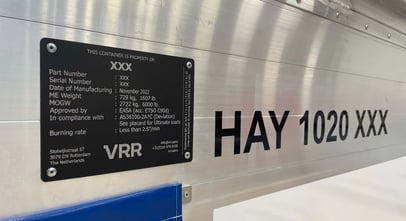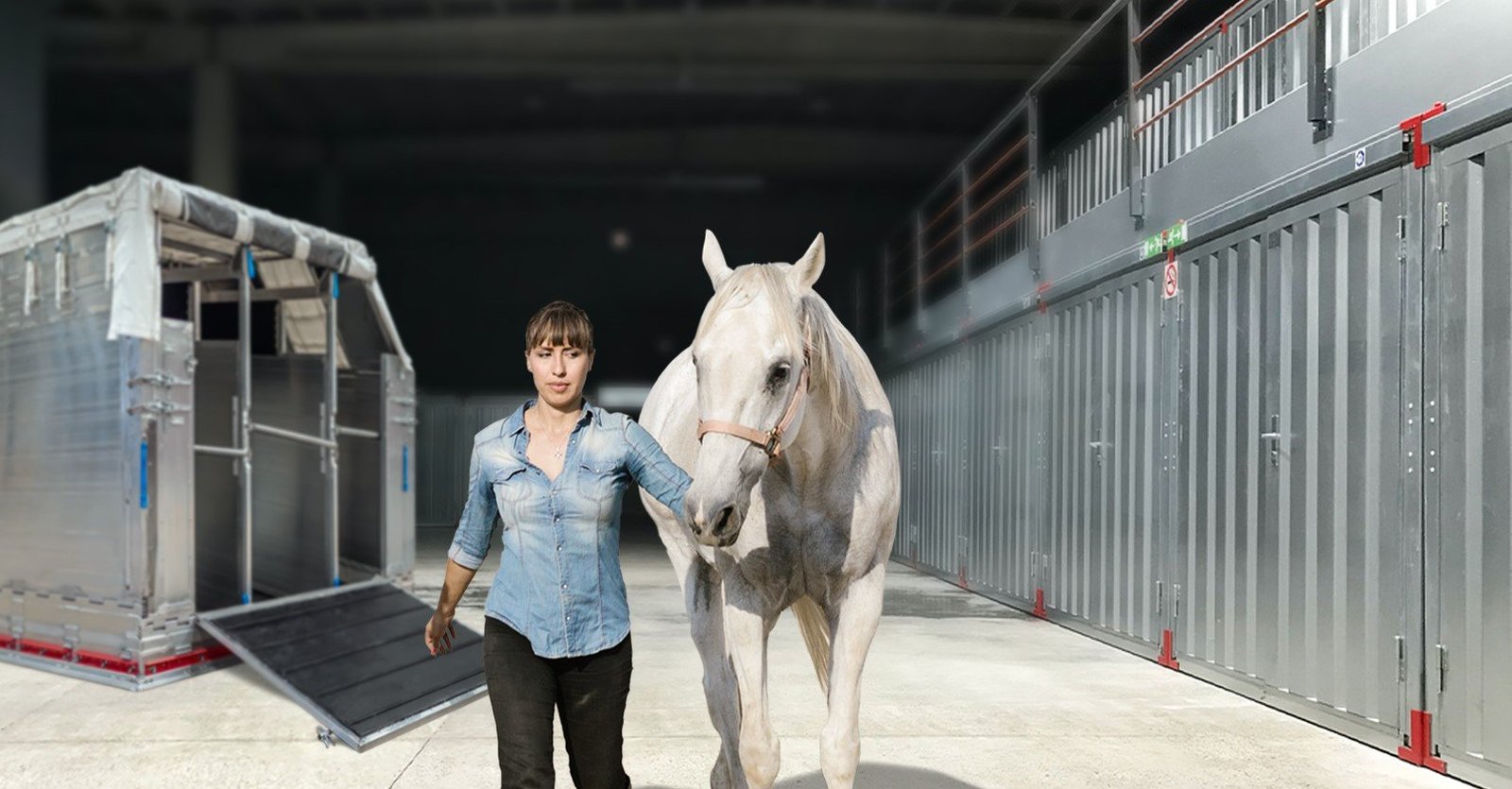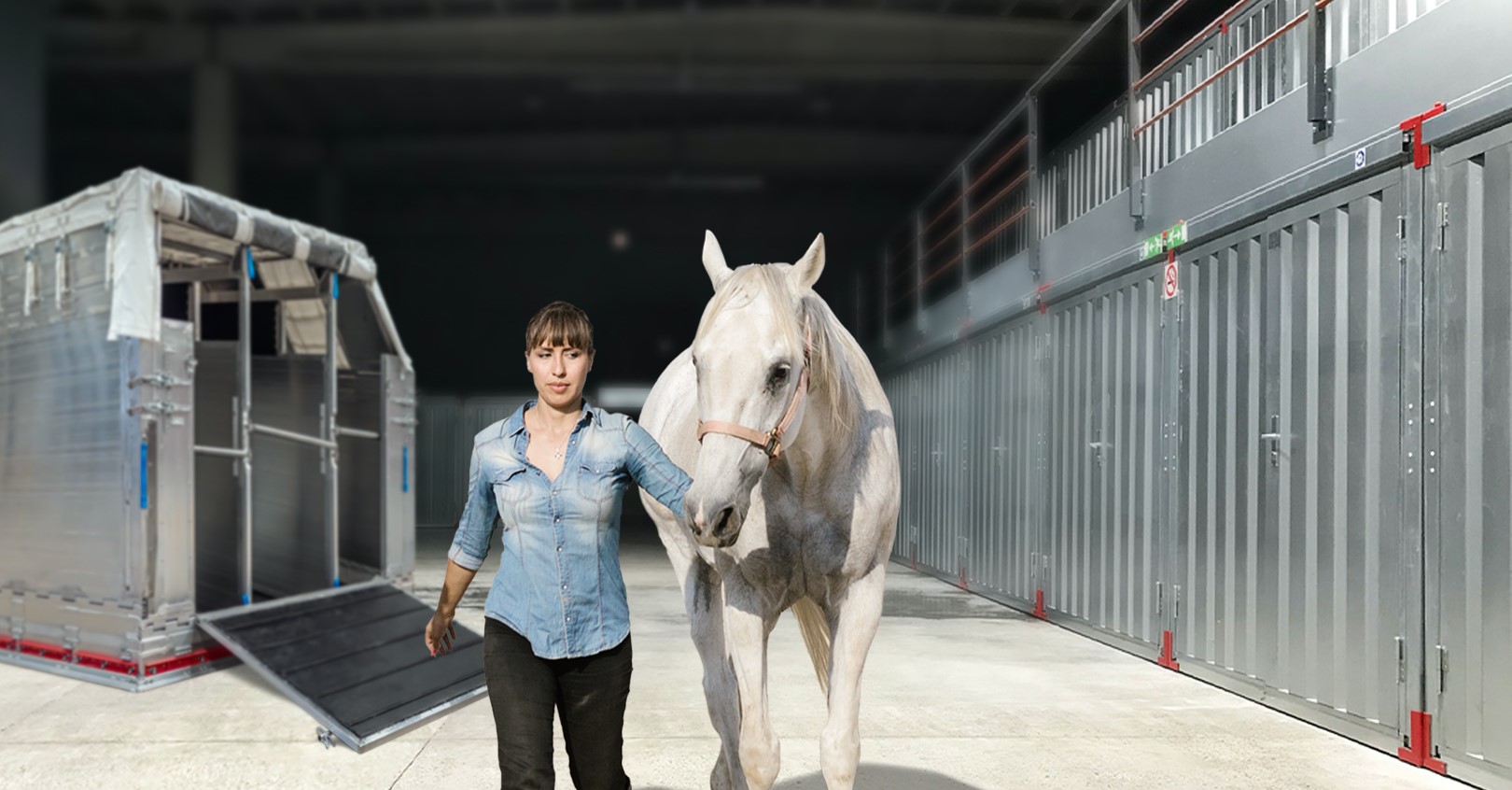Shipping horses by plane is commonplace these days. Nevertheless, choosing the right air horse stall can be complicated for airlines, equine transporters and horse owners. Aspects such as contour, comfort and configuration are just a few of the many considerations.
However, the overarching question facing them is surely this: What’s the best method for flying horses around the world from the perspective of continuous flight safety, operational ease and animal welfare? We’ll answer that for you in this article by identifying and comparing your main options.
3 options for transporting horses by air
There are three primary air cargo alternatives: certified containers, uncertified containers and customised aircraft. The first two offer an enclosed unit for one, two or three horses. The last offers a shared, open space that can accommodate up to around 20 horses, depending on the plane. Let’s go into a little more detail:
-
Certified aircraft horse stalls
Certified containers designed for horse air transportation are—just like regular certified air cargo containers—built and designed according to best aerospace practice and the stringent conditions of ETSO C90d or TSO C90e.* In other words, they meet all strength, fire safety and unit identification standards. They can also be secured directly to the aircraft’s Cargo Loading System (CLS) in line with the plane’s Weight and Balance Manual (WBM).

*Certified horse stalls can be recognized by the (E)TSO plate mounted on one of their walls. Without this plate, the stall may be judged uncertified.
-
Uncertified aircraft horse stalls
Also known as non-aircraft horse stalls, uncertified stalls look just like their certified counterparts at first glance. However, their design and build standards have not been assessed by a regulatory authority for crucial safety and welfare aspects. These stalls sit on standard aircraft pallets and are restrained by a certified cargo net or by straps connected to the aircraft structure.*
*The nets and straps that are used to secure uncertified stalls are not permitted to come into contact with the horses.
-
Freighter customised with a modular wall system
This is a regular freighter that turns into a specialised transporter when stalls are fitted. The horses are loaded by walking them up a ramp and into the cargo area, which is covered with straw. A modular wall system is then used to erect shoulder-height partitions around each horse.* The open stalls can be arranged two or three across, and the crew must take apart the stalls one by one to unload the horses.
*In some cases a non-certified open-top structure is used to transport horses. However, this requires a certified net over it.
A side-by-side comparison of your horse air transportation options
All three options above offer refreshments (in the form of hay and water) and allow grooms to attend to the horses’ needs. They are also designed to protect horses from injury and planes from serious damage. However, the extent of that protection and the comfort they offer differs significantly.
Flight safety
Certified horse stalls are designed to be directly restrained by the aircraft’s CLS, and it’s that interface that makes them subject to stringent airworthiness standards. Since they meet the requirements of ETSO C90d, the ULD manufacturer can guarantee that these stalls will not damage the plane to the point of risking flight safety.
Conversely, neither uncertified horse stalls nor modular wall systems can be restrained by a plane’s CLS. This means the air carrier has the burden of demonstrating and guaranteeing that they are safe in all likely flight conditions. Additionally, the modular system has no watertight base (hence the straw). This can lead to urine leaking into the base of the aircraft, resulting in the corrosion of vital aircraft parts.
Operational ease
There is always a chance that a carrier will deny the loading of an uncertified horse stall if it cannot obtain airworthiness approval. Likewise, any concerns about the technical or safety aspects of a modular wall system can lead to shipment being denied. However, this operational risk does not exist with certified horse stalls because the owner just needs to produce the relevant documentation.
Another factor is the actual loading procedure. To make non-aircraft horse stalls compliant, they must be placed on a certified pallet and restrained exactly as instructed by the lashing plan made according to the plane’s WBM. There is no room for error and loading times can increase considerably as a result. What’s more, the straps and nets can restrict groom access to the horses throughout the flight.
Likewise, loading horses into a customised plane is a time-consuming process because each stall must be erected manually around a horse before the next horse can come aboard. In contrast, enclosed horse stalls can be carried into the aircraft using its electrically powered CLS. This reduces manpower and loading time significantly.
Animal welfare
Last but not least is the horses’ health and safety, which is supported by SAE ARP 1621. This important document defines the recommended minimum requirements for ULDs to transport horses properly and safely by air. For example, stalls must offer sufficient ventilation openings higher than the horses’ eyes, and they must provide drainage outlets with leak-proof, permanent plugs.
Although highly recommended, SAE ARP 1621 is not mandatory for either certified or uncertified horse stalls, so always check with the manufacturer for evidence of compliance. Note, too, that certified horse stalls tend to give better groom access and provide additional features that help keep horses calm and comfortable on airplanes. Examples include noise-absorbing and vibration-damping flooring.
The modular wall system is also subject to best aerospace practice. However, as a lower-budget solution, it doesn’t always provide the optimum safety and comfort conditions. The temporary partitions offer less resistance to unruly horses and can be jumped over in extreme circumstances, while the open design can raise tension levels for some occupants. This increases the risk factor for handlers and horses, especially during loading and unloading.
When animal welfare and comfortable transport are your first priority, you'll probably want to know what 'comfortable' means to your horse. Together with experts from the industry, we've made this infographic to show you the 9 most important things to arrange is you want to make sure your horses feel comfortable while being transported by air.
The pluses and minuses of horse air transport methods:
Conclusion
When deciding which horse air transportation method to use, you’ll be contemplating many factors. All three options described above are designed to protect the horses from injury and reduce the risk of damage to aircraft. However, when it comes to maximum flight safety, operational ease and animal welfare, certified horse stalls tick all the right boxes.
VRR is the world’s specialist in designing certified ULDs for shipping horses by air. Learn more about our safe and comfortable horse stalls. They’re worth a closer look.












